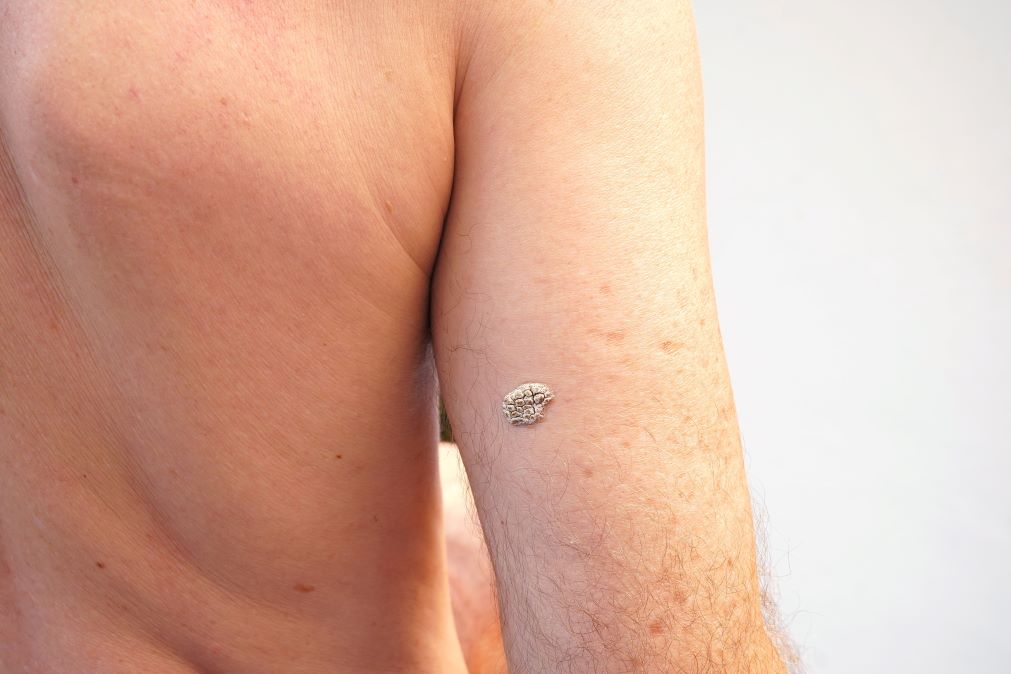If you’ve never heard of seborrheic keratosis, you’re not alone. While this condition is actually relatively common, very few people are aware of its name. According to Dr. Araya “Jay” Zaesim of U.S. Dermatology Partners in Lee’s Summit, Missouri, and Overland Park, Kansas, “Seborrheic keratosis often doesn’t develop until later in life, and it can be difficult to diagnose due to the range of symptoms. For this reason, many people are not sure what to think when they notice the warning signs of this common skin condition. By raising awareness, people who develop seborrheic keratosis can more easily receive a diagnosis and the treatment they need.” In this blog, Dr. Zaesim discusses exactly what seborrheic keratosis is, the causes, symptoms, and treatment options.
Introducing Seborrheic Keratosis
Seborrheic keratosis is the name of a skin condition that causes the production of growths called seborrheic keratoses. Most people develop this condition later in life after the age of 50, and there are typically several growths clustered together. The development of clustered growths has earned seborrheic keratosis the nickname “barnacles of aging.” While this name doesn’t sound very flattering, it’s certainly evocative of the way seborrheic keratosis actually looks.
The good news about seborrheic keratosis, according to Dr. Zaesim, is that “Seborrheic keratosis can look like cancer, and the name even sounds like the most common form of pre-cancerous skin growths called actinic keratoses. While the name and the way it looks can be a little off-putting, seborrheic keratosis is actually completely benign. That means this condition won’t negatively impact your skin health or overall well-being.”
Identifying Seborrheic Keratosis
When it comes to the identification of seborrheic keratosis, Dr. Zaesim says, “This condition needs to be diagnosed by a professional. Because seborrheic keratoses can mimic the appearance of cancerous skin growths, it’s important to receive a professional diagnosis to rule out more serious concerns. If you notice bumps that are uneven, have a rough or scalloped edge, are an unusual color, are very large, or are changing quickly, these growths may be cancerous. Be sure to discuss these growths with your doctor even if you think it’s just seborrheic keratosis.” You may be dealing with seborrheic keratosis if the descriptions below sound familiar.
Appearance
Some people may develop just one seborrheic keratosis growth, but in most cases, a cluster of growths will develop. They may look a bit like blotches of wax dripped on the skin. The coloring varies based on natural skin tone, but seborrheic keratoses are usually just a few shades darker than the natural color of the skin. They may be small in size, but seborrheic keratoses can grow very large.
Texture
Seborrheic keratoses growths tend to feel waxy. They have been described as feeling like drips of wax from a candle stuck to the skin. For others, the growths are bumpy or rough. The growth can thicken over time, looking like a mole.
Location
Seborrheic keratosis can develop on almost any part of the body. The only place it doesn’t develop is on the palms of hands and soles of feet. However, it is most common on the scalp, face, and upper body.
Early Signs and Symptoms
Seborrheic keratosis typically develops slowly, it’s not likely to spread, and it’s completely benign. Even so, you may still want to discuss this condition with a dermatologist for a clear diagnosis. If you choose not to have seborrheic keratoses removed, these growths will not clear up on their own. They can, however, thicken over time, making it more difficult for them to be safely removed. For this reason, it’s important to consult with a dermatologist as soon as you notice any warning signs of seborrheic keratosis.
Demystifying the Causes
The exact cause of seborrheic keratosis is unknown. However, some factors increase the risk for this condition, including:
- Genetics – If one or more family members have this condition, you may be more likely to develop it.
- Age – Most people develop seborrheic keratosis after the age of 50.
- Hormonal fluctuation – Changes in hormone levels during pregnancy and menopause may lead to the development of these growths.
- Gender – Men are more likely to develop seborrheic keratosis than women.
- Dark skin tone – People with darker skin are more likely to develop seborrheic keratoses around the eyes.
- Sun damage – Seborrheic keratoses can develop anywhere, but these growths most often occur on areas of the body that are exposed to sunlight regularly.
Treatment Options Available
When it comes to treatment options, Dr. Zaesim says, “Seborrheic keratosis doesn’t always require treatment, but if the appearance or location of the growths causes discomfort, there are many treatment options available. In some cases, it’s not possible to provide an accurate diagnosis through visual inspection alone to ensure seborrheic keratosis is not cancer or any other more serious health concern. In these situations, your dermatologist will likely need to perform a biopsy to check for cancerous cells.”
If you and your dermatologist decide that removing the seborrheic keratoses growths is the best option, there are several ways of treating seborrheic keratosis, including:
- Cryotherapy – Using cold to freeze away growths.
- Electrocautery – Using an electric current to break down and remove growths.
- Curettage – Using a specialized surgical instrument to scoop away seborrheic keratoses and skin impacted by this condition. This treatment may be used in combination with electrocautery.
- Laser ablation – Using a laser to vaporize the seborrheic keratosis growths.
Following any of these procedures, most people only see some lightening of the skin that clears up with time. Rarely, seborrheic keratoses may reform after treatment. To ensure the best results, it’s important to care for your skin after removal. ALASTIN Skincare Restorative Skin Complex with TriHex Technology is one of the best post-procedure skincare products available to help skin heal and avoid any adverse effects. This innovative product is formulated to promote healing and improve the skin’s overall appearance.
Being Proactive with Seborrheic Keratosis
The best thing you can do if you notice warning signs of early-stage seborrheic keratosis is to seek professional medical advice right away. New growths, especially if they develop quickly, can be intimidating, but it’s better to know exactly what you’re dealing with to alleviate any unnecessary stress. According to Dr. Zaesim, “Talking to a dermatologist about any areas of skin concern is very important. Not only can they provide you with treatment and diagnosis, but they can also put your mind at ease if you’re worrying about potential risks. Don’t put off talking to a professional if you have concerns. We’re here to help.”
Learn More from Your Dermatologist
If you have symptoms you think may be seborrheic keratosis, a dermatologist can help you better understand your skin and find the right dermatologic treatments to address any concerns. When you’re ready to schedule a consultation with a dermatologist, take a few moments to fill out the scheduling request form from the U.S. Dermatology Partners team. Once we hear from you, one of our local team members will be in touch to finalize the details of your visit.
Find a location near me
or


